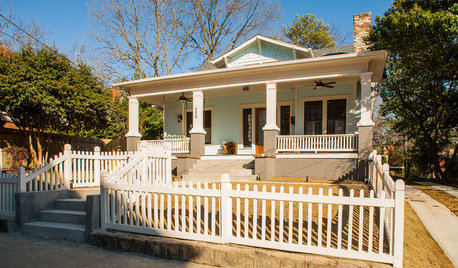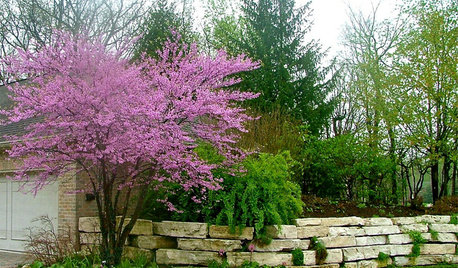Turning Georgia clay into soil
ladybug_0820
11 years ago
Featured Answer
Sort by:Oldest
Comments (58)
batyabeth
11 years agolast modified: 9 years agoRelated Professionals
Arlington Landscape Architects & Landscape Designers · La Marque Landscape Architects & Landscape Designers · Piqua Landscape Architects & Landscape Designers · Brockton Landscape Contractors · Darien Landscape Contractors · Englewood Landscape Contractors · Fairview Landscape Contractors · Fort Mill Landscape Contractors · Washington Landscape Contractors · Wells Landscape Contractors · Little Rock Decks, Patios & Outdoor Enclosures · Novi Decks, Patios & Outdoor Enclosures · Randallstown Decks, Patios & Outdoor Enclosures · Statesville Decks, Patios & Outdoor Enclosures · Verde Village Decks, Patios & Outdoor Enclosureswayne_5 zone 6a Central Indiana
11 years agolast modified: 9 years agoallen456
11 years agolast modified: 9 years agoKimmsr
11 years agolast modified: 9 years agojolj
11 years agolast modified: 9 years agolori_ny
11 years agolast modified: 9 years agohortster
11 years agolast modified: 9 years agorhizo_1 (North AL) zone 7
11 years agolast modified: 9 years agowayne_5 zone 6a Central Indiana
11 years agolast modified: 9 years agotoxcrusadr
11 years agolast modified: 9 years agopiedmontnc
11 years agolast modified: 9 years agoUser
11 years agolast modified: 9 years agoyolos - 8a Ga. Brooks
11 years agolast modified: 9 years agomackel_in_dfw
11 years agolast modified: 9 years agoyolos - 8a Ga. Brooks
11 years agolast modified: 9 years agofairfield8619
11 years agolast modified: 9 years agoKimmsr
11 years agolast modified: 9 years agoOil_Robb
11 years agolast modified: 9 years agoluckygal
11 years agolast modified: 9 years agojonfrum
11 years agolast modified: 9 years agocali1023
11 years agolast modified: 9 years agopnbrown
11 years agolast modified: 9 years agoTheMasterGardener1
11 years agolast modified: 9 years agoKimmsr
11 years agolast modified: 9 years agoTheMasterGardener1
11 years agolast modified: 9 years agothatcompostguy
11 years agolast modified: 9 years agoRpR_
11 years agolast modified: 9 years agowayne_5 zone 6a Central Indiana
11 years agolast modified: 9 years agoemgardener
11 years agolast modified: 9 years agoallen456
11 years agolast modified: 9 years agoRpR_
11 years agolast modified: 9 years agopnbrown
11 years agolast modified: 9 years agoallen456
11 years agolast modified: 9 years agoTheMasterGardener1
11 years agolast modified: 9 years agoTheMasterGardener1
11 years agolast modified: 9 years agoRpR_
11 years agolast modified: 9 years agoTheMasterGardener1
11 years agolast modified: 9 years agoRpR_
11 years agolast modified: 9 years agoallen456
11 years agolast modified: 9 years agowayne_5 zone 6a Central Indiana
11 years agolast modified: 9 years agoKimmsr
11 years agolast modified: 9 years agowayne_5 zone 6a Central Indiana
11 years agolast modified: 9 years agoemgardener
11 years agolast modified: 9 years agoRpR_
11 years agolast modified: 9 years agowayne_5 zone 6a Central Indiana
11 years agolast modified: 9 years agoMatt_705
10 years agolast modified: 9 years agococonut_head
10 years agolast modified: 9 years agocwrebel
10 years agolast modified: 9 years agoCris James
5 years ago
Related Stories

GARDENING GUIDESHow to Stop Worrying and Start Loving Clay Soil
Clay has many more benefits than you might imagine
Full Story
GARDENING GUIDESGardening Solutions for Heavy Clay Soils
What’s a gardener to do with soil that’s easily compacted and has poor drainage? Find out here
Full Story
GARDENING GUIDES5 Prairie Wildflowers That Can Heal Your Soil
Get free, organic soil fertilizer with nitrogen-pumping plants that draw pollinators too
Full Story
GARDENING GUIDESThe Poop Scoop: Enrich Your Soil With Good Old Manure
Get over the ick factor already — this natural super-ingredient for soil has so many benefits, you'll wonder why you ever went chemical
Full Story
GARDENING GUIDES10 Solutions for Soggy Soil
If a too-wet garden is raining on your parade, try these water-loving plants and other ideas for handling all of that H2O
Full Story
FARM YOUR YARDHow to Get Good Soil for Your Edible Garden
The nutrients in your soil feed the plants that feed you. Here are tips on getting it right — just in time for planting season
Full Story
GARDENING GUIDES9 Clay-Busting Native Flowers for Summer Sun
These plants survive and even thrive in tough clay soil east of the Rocky Mountains
Full Story
BEFORE AND AFTERSHouzz Tour: New Life for a Historic Georgia Fixer-Upper
Renovation restrictions didn't limit a couple's enthusiasm for this well-sited Decatur home
Full Story
GARDENING GUIDES10 Top Mid-Atlantic Native Plants
Enjoy a four-season garden in the mid-Atlantic region with plants that will stand up to weather shifts, clay soil and the occasional deer
Full Story
GARDENING GUIDES6 Native Ground Covers for Tough, Dry Spots
Sun beating down on your sandy gravel? Thick shade darkening your clay soil? There’s a ground cover here for you
Full StoryMore Discussions







mackel_in_dfw